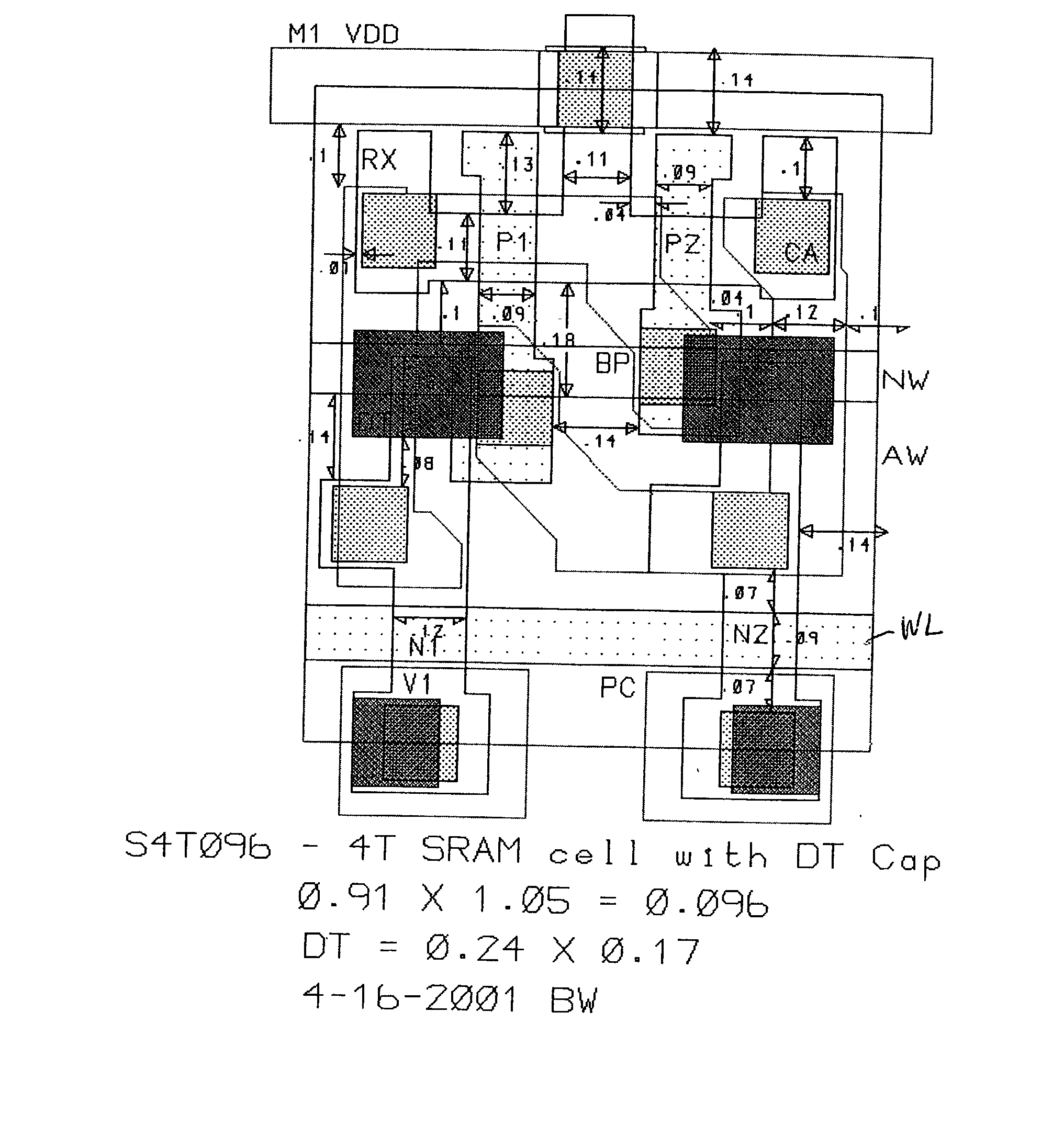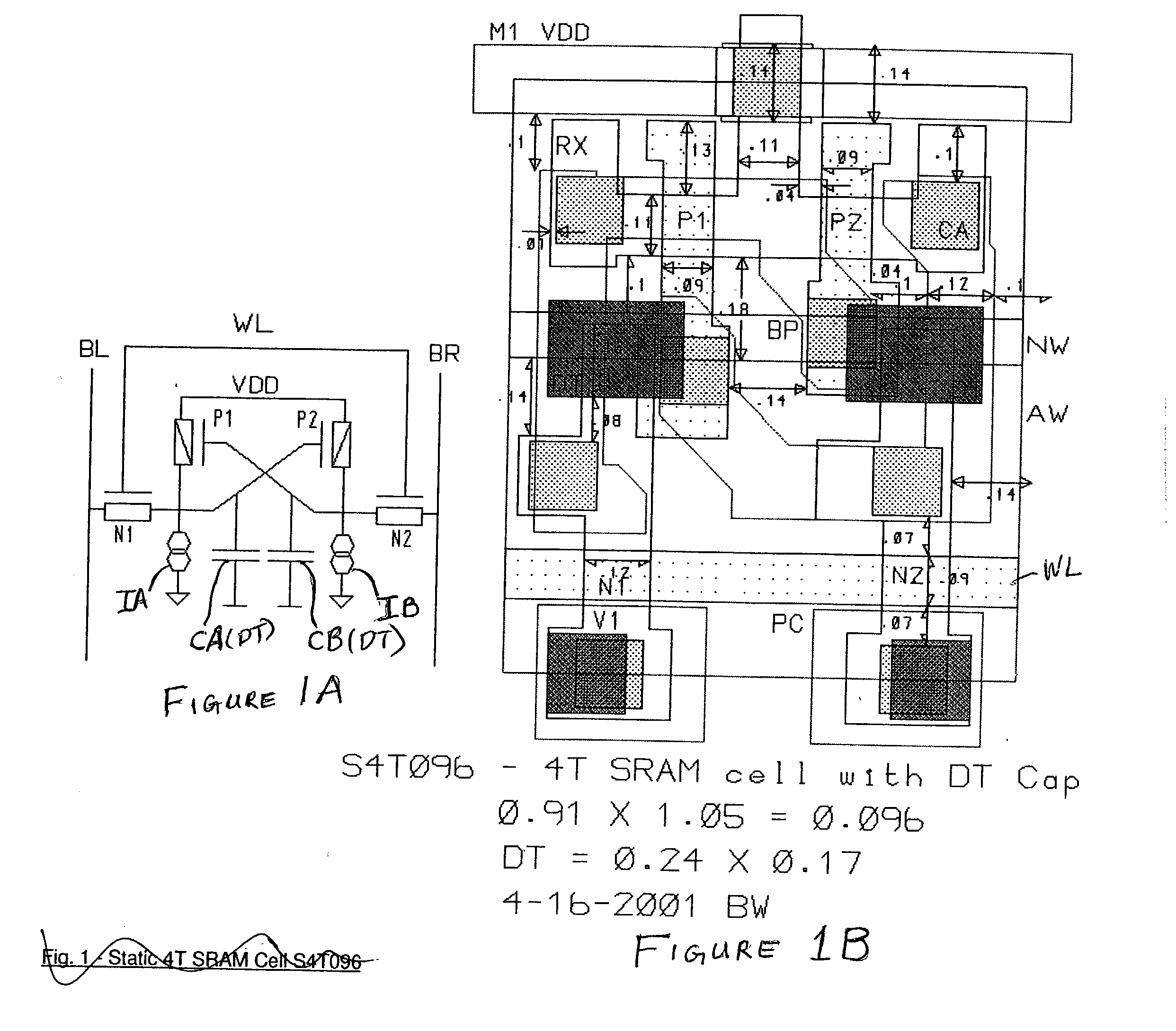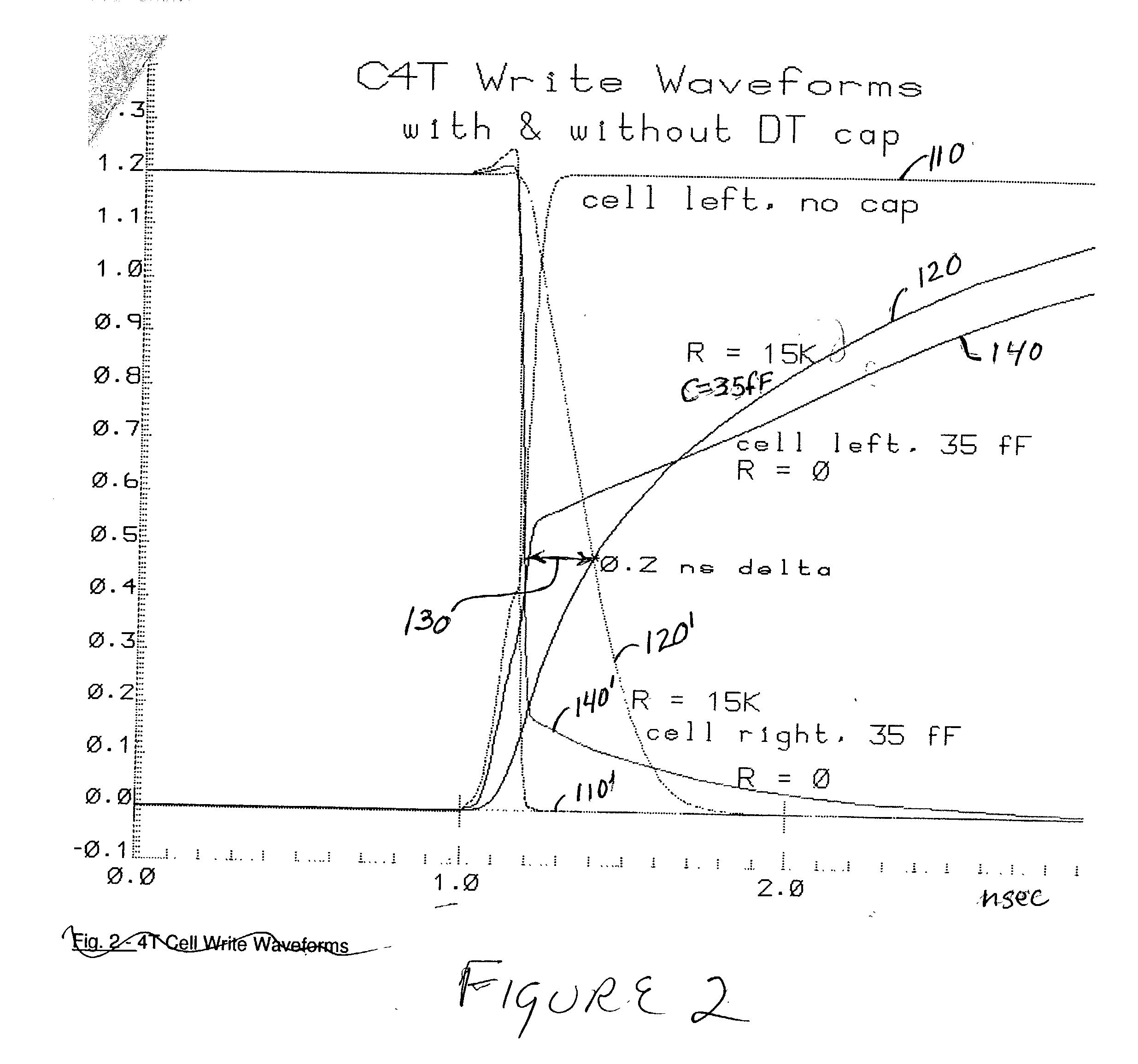Secure and static 4T SRAM cells in EDRAM technology
a sram cell, static technology, applied in the direction of digital storage, instruments, semiconductor devices, etc., can solve the problems of limited program execution speed of modern digital data processors, affecting the performance of memory cells, and affecting the degree to which any given memory cell design can be scaled to smaller sizes without compromising performan
- Summary
- Abstract
- Description
- Claims
- Application Information
AI Technical Summary
Problems solved by technology
Method used
Image
Examples
Embodiment Construction
[0018] Referring now to the drawings, and more particularly to FIG. 1A, there is shown a schematic circuit diagram of a 4T memory cell in accordance with the invention. It will be appreciated by those skilled in the art from the following discussion that the present invention exploits several generally undesirable characteristics of various circuit elements which are increased as the elements are scaled to smaller sizes to provide a memory cell having fewer elements which nevertheless achieves enhanced stability without constraints on the mode of operation which conflict with or may be contrary to common modes of operation. These meritorious effects are achieved in accordance with the invention while improving soft error immunity or at least avoiding expected increases in soft error susceptibility.
[0019] More specifically, the invention principally uses a capacitor technology developed for so-called embedded DRAMs (EDRAM) which can be fabricated at extremely small size in a substrat...
PUM
 Login to view more
Login to view more Abstract
Description
Claims
Application Information
 Login to view more
Login to view more - R&D Engineer
- R&D Manager
- IP Professional
- Industry Leading Data Capabilities
- Powerful AI technology
- Patent DNA Extraction
Browse by: Latest US Patents, China's latest patents, Technical Efficacy Thesaurus, Application Domain, Technology Topic.
© 2024 PatSnap. All rights reserved.Legal|Privacy policy|Modern Slavery Act Transparency Statement|Sitemap



